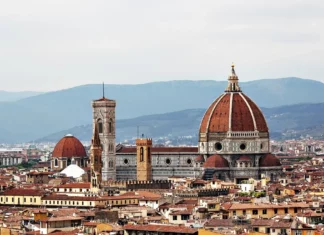The Uffizi Gallery is one of the most famous museums in the world thanks to its extraordinary collections of ancient sculptures and paintings, from the Middle Ages to modern times.
The Gallery is part of the museum complex that includes the Vasari Corridor and the collections of Palazzo Pitti and the Boboli Gardens. The building with its characteristic U-shaped loggia, located between Piazza della Signoria, Palazzo Vecchio and the river Arno was designed by Giorgio Vasari in the mid-16th century.
The collections of paintings from the 14th century and the Renaissance contain a number of absolute art masterpieces of all time, made by artists such as: Giotto, Piero della Francesca, Lippi, Botticelli, Mantegna, Correggio, Leonardo, Raphael, Michelangelo, Caravaggio and Canaletto. There are also important collections by German, Dutch and Flemish painters, like Dürer, Rembrandt and Rubens. The Museum also houses the Classical Antiquities Collection and the famous Department of Prints and Drawings, which includes about 150,000 works of the greatest Tuscan masters, from Leonardo to Michelangelo.
The most famous masterpieces housed here are:
- the Spring and the Birth of Venus by Sandro Botticelli;
- the Venus of Urbino by Titian;
- Michelangelo’s Doni Tondo;
- Leonardo’s Annunciation (and his unfinished work The Adoration of the Magi);
- Piero della Francesca’s Double portrait of the Dukes of Urbino;
- Caravaggio’s Bacchus and Medusa.
The Vasari Corridor is a raised walkway connecting Ponte Vecchio to Palazzo Pitti. It is a rather narrow passage, the entrance to which is at the beginning of the second corridor of the Uffizi Gallery; it then stretches along the river Arno, over Ponte Vecchio, finally reaching Palazzo Pitti. It was built in 1565 by great Florentine architect Giorgio Vasari. On display along the Corridor are over 1000 paintings.



